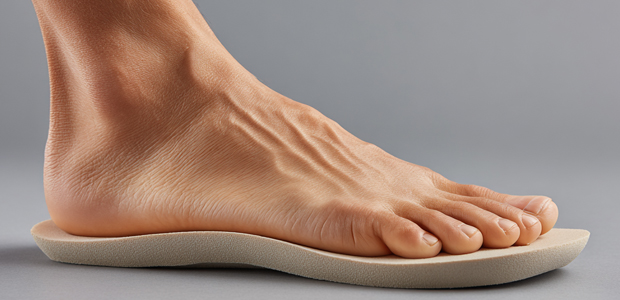
Podiatry refers to the medical specialty focused on the diagnosis, treatment, and prevention of conditions affecting the foot, ankle, and lower leg. Podiatrists (also called Doctors of Podiatric Medicine or DPMs) treat a wide range of issues including bunions, hammertoes, heel pain, ingrown toenails, fractures, sports injuries, diabetic foot care, and biomechanical problems. They perform both medical and surgical procedures to help patients maintain mobility and quality of life.
 Podiatric professionals work with patients of all ages, from children with developmental foot problems to elderly patients dealing with arthritis and circulation issues. Treatment can involve custom orthotics, medication, physical therapy, minor in-office procedures, and advanced surgical interventions, depending on each patient’s specific needs. Many podiatrists also work closely with primary care physicians and endocrinologists to manage diabetic patients, who face serious risks of foot complications.
Podiatric professionals work with patients of all ages, from children with developmental foot problems to elderly patients dealing with arthritis and circulation issues. Treatment can involve custom orthotics, medication, physical therapy, minor in-office procedures, and advanced surgical interventions, depending on each patient’s specific needs. Many podiatrists also work closely with primary care physicians and endocrinologists to manage diabetic patients, who face serious risks of foot complications.
Podiatry is essential for maintaining overall health and mobility, particularly for patients with diabetes, arthritis, and circulation problems. These specialists play a critical role in preventing amputations and keeping patients active and independent throughout their lives.
Podiatry Billing
Accurate Coding for Reimbursement

Podiatry billing centers on the accurate coding of services using established coding systems, including the International Classification of Diseases (ICD-10) for diagnoses and Current Procedural Terminology (CPT) codes for procedures and office visits. Precise coding is essential for ensuring proper reimbursement from insurance companies and government programs.
The challenge in podiatry billing lies in the mix of medical and surgical services provided, often during the same visit. A podiatrist might perform a routine foot exam, trim dystrophic nails, apply a strapping, and discuss treatment options for plantar fasciitis, all in one appointment. Each service needs proper documentation and coding with the correct modifiers. Missing codes or incorrect use of modifiers can lead to bundling issues, underpayment, or claim denials.
Podiatry also faces unique coding challenges around routine foot care versus medically necessary treatment. Medicare and many insurance plans have specific rules about when nail trimming, callus removal, and other routine care can be billed. These services are only covered when the patient has certain qualifying conditions like diabetes or peripheral vascular disease. Billing routine care as medical treatment when conditions don’t qualify can result in audits, recoupments, and potential fraud allegations.
Working with Payer Regulations
Each payer, whether a private insurance company or a government program like Medicaid or Medicare, has its own set of rules, regulations, and reimbursement policies. Podiatry billers must stay up-to-date with these constantly changing guidelines to maximize reimbursement and avoid denials or audits.
Medicare has particularly strict rules for podiatry services. The program distinguishes between “routine foot care” (which is generally not covered) and “medically necessary foot care” (which is covered when specific conditions exist). Class findings, which indicate systemic conditions affecting the lower extremities, determine coverage eligibility. Providers must document class findings clearly to justify billing for services that might otherwise be considered routine.
Commercial payers each have their own policies regarding what procedures require prior authorization, which diagnoses support medical necessity, and how they want multiple procedures billed. Some insurers automatically bundle certain codes together, paying only for the primary procedure while denying payment for additional work. Knowing each payer’s bundling edits and modifier requirements is crucial for proper reimbursement.
Workers’ compensation cases, which are common in podiatry practices, add another layer of billing requirements. These cases often require specific forms, narrative reports, and different coding approaches than traditional health insurance claims. Fee schedules vary by state and employer, and authorization requirements can be extensive.
Streamlining Claims Submission

Many podiatry practices and billing companies utilize specialized software and clearinghouses to streamline the claims submission process. These tools can help identify and correct errors before claims are sent to payers, reducing the risk of denials and improving cash flow.
Electronic health records (EHR) systems designed for podiatry can automate much of the coding process by suggesting appropriate CPT codes based on documented procedures. However, podiatry-specific EHR systems work better than general medical software because they account for the unique nature of foot and ankle care. Templates for common conditions like plantar fasciitis, bunions, and diabetic foot exams help ensure complete documentation.
Clearinghouses act as intermediaries between practices and insurance companies, checking claims for errors before submission. They verify that diagnosis codes support the procedures billed, modifiers are used correctly, and all required fields are complete. For podiatry claims, clearinghouses can catch common errors like missing class findings for routine foot care or incorrect use of surgical modifiers.
Digital imaging and documentation tools have become increasingly important in podiatry billing. X-rays, photographs of wounds or deformities, and gait analysis reports provide supporting documentation for procedures and help defend against denials or audits. Keeping these records organized and accessible strengthens your billing position.
Effective Denial Management
Even with careful coding and submission processes, claim denials are sometimes unavoidable. Effective denial management involves analyzing the reasons for denials, appealing them when appropriate, and implementing measures to prevent future denials, ensuring optimal reimbursement for services rendered.
Common denial reasons in podiatry include lack of medical necessity (especially for nail and callus care), missing or inadequate documentation of class findings, incorrect use of modifiers on multiple procedures, services deemed cosmetic rather than medical, and missing prior authorizations for orthotics or surgical procedures.
Medical necessity denials require strong appeals with detailed documentation. If Medicare denies nail trimming because class findings aren’t documented, your appeal needs to include clear evidence of the patient’s systemic condition, examination findings showing compromised circulation or sensation, and explanation of why the service was medically necessary rather than routine care.
Modifier-related denials often stem from confusion about when to use modifier 59 (distinct procedural service) versus modifiers like RT (right side) and LT (left side). Podiatry frequently involves bilateral procedures, and payers want to see clear documentation that work on both feet was truly necessary and performed. Some procedures require modifier 50 (bilateral procedure) while others need separate line items with RT and LT modifiers.
Time is critical in denial management. Most payers allow only 30 to 90 days for appeals, and missing these deadlines means permanently losing that revenue. Having someone dedicated to reviewing denials daily, researching the reasons, and initiating appeals quickly keeps money from slipping away.
Podiatry Credentialing
Ensuring Provider Qualifications

Credentialing is a crucial process in the podiatry field that verifies the qualifications, credentials, and professional standing of healthcare providers. It is a mandatory requirement for providers to be credentialed by insurance companies and healthcare organizations before they can provide services and submit claims for reimbursement.
Without proper credentialing, a podiatrist cannot participate in insurance networks, which means patients would need to pay out-of-pocket for all services. Since podiatric care can be expensive (surgical procedures can cost thousands of dollars), most patients rely on insurance coverage. Being out-of-network severely limits a practice’s ability to attract and retain patients. Credentialing is essential for practice success.
The credentialing process begins when a podiatrist applies to join an insurance network. The insurance company then verifies every aspect of the provider’s professional background. This includes checking podiatric medical school graduation, residency completion, board certifications (if applicable), state podiatric medical licenses, DEA registration (for prescribing controlled substances), malpractice insurance coverage, and work history.
Maintaining Compliance and Quality
The credentialing process involves an extensive review of a provider’s education, training, licensure, certifications, malpractice history, and other relevant credentials. This rigorous process ensures that patients receive care from qualified and competent professionals, promoting quality of care and patient safety within the podiatry sector.
Insurance companies check the National Practitioner Data Bank, which tracks malpractice payments, license actions, and clinical privilege restrictions. They verify that providers don’t appear on any exclusion lists, such as the Office of Inspector General (OIG) List of Excluded Individuals and Entities. Being on an exclusion list prohibits providers from participating in federal healthcare programs like Medicare and Medicaid.
Credentialing isn’t a one-time event. Most insurance companies require re-credentialing every two to three years. During re-credentialing, they verify that your podiatric medical license remains active, your malpractice insurance is current, and there have been no new disciplinary actions or malpractice claims. Letting credentials lapse can result in immediate removal from the network and interruption of payments for all services rendered after the lapse date.
Podiatrists who perform surgery need additional credentialing for hospital privileges and ambulatory surgery centers. Surgical credentialing includes review of your training in specific procedures, complication rates, and peer references from other surgeons. Some hospitals and surgery centers require podiatrists to maintain board certification to retain surgical privileges.
Working Through Credentialing Requirements
 Different payers and organizations may have varying credentialing requirements, making the process time-consuming and detail-oriented. Podiatrists must work through these requirements, gather the necessary documentation, and maintain up-to-date credentials to remain in good standing with insurance companies and healthcare organizations.
Different payers and organizations may have varying credentialing requirements, making the process time-consuming and detail-oriented. Podiatrists must work through these requirements, gather the necessary documentation, and maintain up-to-date credentials to remain in good standing with insurance companies and healthcare organizations.
The Council for Affordable Quality Healthcare (CAQH) ProView system has simplified credentialing by creating a centralized database where providers can maintain their information. Most major insurance companies pull credentialing data directly from CAQH, reducing the need to fill out separate applications for each payer. However, podiatrists still need to keep their CAQH profile current and respond to individual payer requests for additional information.
Timing matters significantly in credentialing. The process typically takes 90 to 120 days from initial application to approval, though it can stretch to six months or longer if there are complications with documentation or verification. New practices should start the credentialing process well before opening their doors, as you cannot bill insurance until credentialing is complete. This means you might be seeing patients and providing services for months before you can actually collect payment.
Group practices face additional credentialing considerations. When adding a new podiatrist to the practice, you must credential them with all the insurance plans the practice participates in. This process happens in addition to individual provider credentialing and involves verifying the practice’s Tax ID, office locations, and billing information. Some practices operate multiple locations, and each location may need separate credentialing depending on payer requirements.
Further Details
Services We Provide
Podiatry practices deal with diverse billing scenarios ranging from routine diabetic foot care to complex reconstructive surgery.
Our services include:
- Primary and secondary claims processing
- 24-hour turnaround on claims submission
- Prompt follow-up with approved and denied claims
- Posting explanation of benefits (EOBs)
- Correcting patient information
- Maintaining clean accounts receivable under 90 days
- Creation of a payer matrix showing which services are covered by each insurance plan
- Fee schedule setup and maintenance specific to podiatry
- Credentialing for new and established providers
- Prior authorization management for surgeries and orthotics
- Workers’ compensation claim handling
- And more
Serving the Following Types of Podiatry Providers
- Solo practitioners
- Small and large group practices
- Podiatric surgical practices
- Sports medicine podiatrists
- Diabetic foot care specialists
- Wound care centers
- Hospital-based podiatry services
- Multi-specialty clinics with podiatry departments
Common Podiatry CPT Codes
Podiatry practices use a wide variety of CPT codes spanning from office visits to major surgical procedures.
Some of the most common include:
Office Visits (Evaluation and Management):
- 99202-99205: New patient office visits (varying levels)
- 99211-99215: Established patient office visits (varying levels)
- 99203 and 99213: Most commonly used codes for new and established patients
Routine Foot Care (Requires Qualifying Conditions):
- 11055-11057: Paring or cutting of benign hyperkeratotic lesions (calluses/corns)
- 11719: Trimming of nondystrophic nails
- 11720: Debridement of nail(s), one to five
- 11721: Debridement of nail(s), six or more
Common In-Office Procedures:
- 11730-11732: Avulsion of nail plate (partial or complete)
- 17110-17111: Destruction of benign lesions
- 28190: Removal of foreign body, foot
- 29540: Strapping, ankle and/or foot
- 64455: Injection of nerve block, tarsal tunnel
- 20550: Injection of tendon sheath or ligament
Diagnostic Procedures:
- 73620: Radiologic exam, foot, two views
- 73630: Radiologic exam, foot, complete (minimum three views)
- 93922-93923: Noninvasive physiologic studies of lower extremity arteries
- 96000-96004: Motion analysis with or without video
Surgical Procedures:
- 28285: Correction of hammertoe
- 28296: Correction of bunion (simple)
- 28297: Correction of bunion with first metatarsal osteotomy (Lapidus type)
- 28306: Osteotomy, tarsal bones
- 28292: Correction of hallux valgus (bunion) with sesamoidectomy
- 28308: Osteotomy, calcaneus
- 27650: Repair of Achilles tendon
Orthotic Devices:
- L3000: Foot insert, removable, molded to patient model, UCB type
- L3020: Foot insert, removable, molded to patient model, longitudinal arch support
- L3030: Foot insert, removable, formed to patient foot
Important Modifiers for Podiatry
Modifiers provide additional information about services and can significantly affect reimbursement.
Common modifiers in podiatry include:
- Modifier 25: Significant, separately identifiable E/M service on the same day as a procedure
- Modifier 50: Bilateral procedure
- Modifier 51: Multiple procedures performed during the same session
- Modifier 59: Distinct procedural service
- Modifier RT: Right side
- Modifier LT: Left side
- Modifier T1-T9, TA: Toe modifiers for specific digit identification
- Modifier 78: Unplanned return to the operating room for related procedure during the postoperative period
- Modifier 79: Unrelated procedure during the postoperative period
Summary: Billing, Credentialing Services for Podiatry
 Outsourcing your podiatry billing and credentialing can offer several advantages to podiatric physicians and practices. Billing for podiatry services can be detailed, time-consuming, and requires specialized expertise in areas like Medicare class findings, modifier usage for bilateral procedures, and the distinction between routine and medically necessary care. By outsourcing this process to a third-party billing company, podiatrists can save time and reduce administrative burden while ensuring billing accuracy and compliance with regulations.
Outsourcing your podiatry billing and credentialing can offer several advantages to podiatric physicians and practices. Billing for podiatry services can be detailed, time-consuming, and requires specialized expertise in areas like Medicare class findings, modifier usage for bilateral procedures, and the distinction between routine and medically necessary care. By outsourcing this process to a third-party billing company, podiatrists can save time and reduce administrative burden while ensuring billing accuracy and compliance with regulations.
Additionally, outsourcing can provide access to advanced billing technology and expertise in podiatry-specific billing challenges, which can help maximize revenue and improve the financial health of the practice. Many podiatrists find that managing billing in-house takes time away from patient care and doesn’t generate enough additional revenue to justify the effort and expense, especially given the unique requirements of podiatric billing.
Medwave is a leader in providing complete medical billing services to podiatry providers. Whether you’re a general podiatrist, surgical specialist, or diabetic foot care expert, we work with you to provide an excellent performance-driven experience that will make a difference in your office’s reimbursement. Our expertise in billing, credentialing, and payer contracting sets us apart.
With over 20 years of billing and credentialing experience, we have assisted new and established practices accurately process many hundreds of thousands of claims. We are able to utilize your current cloud-based software or we can help you discover new products tailored to your podiatry practice volume and specific needs.
Contact us today to speak to a member of our team about how we can help your podiatry practice thrive.
